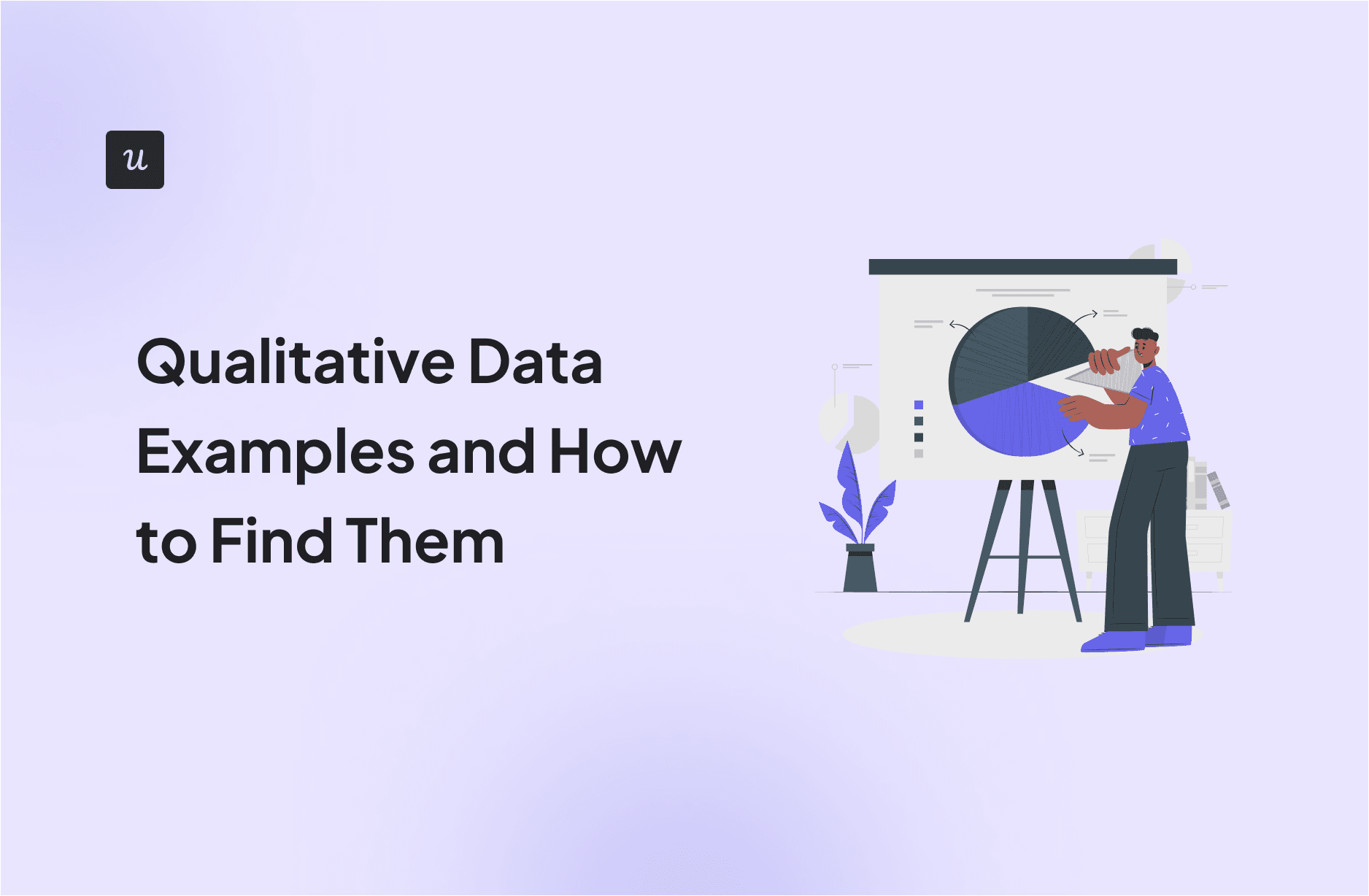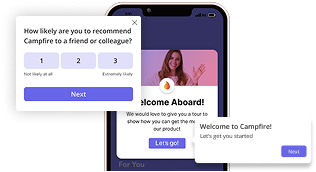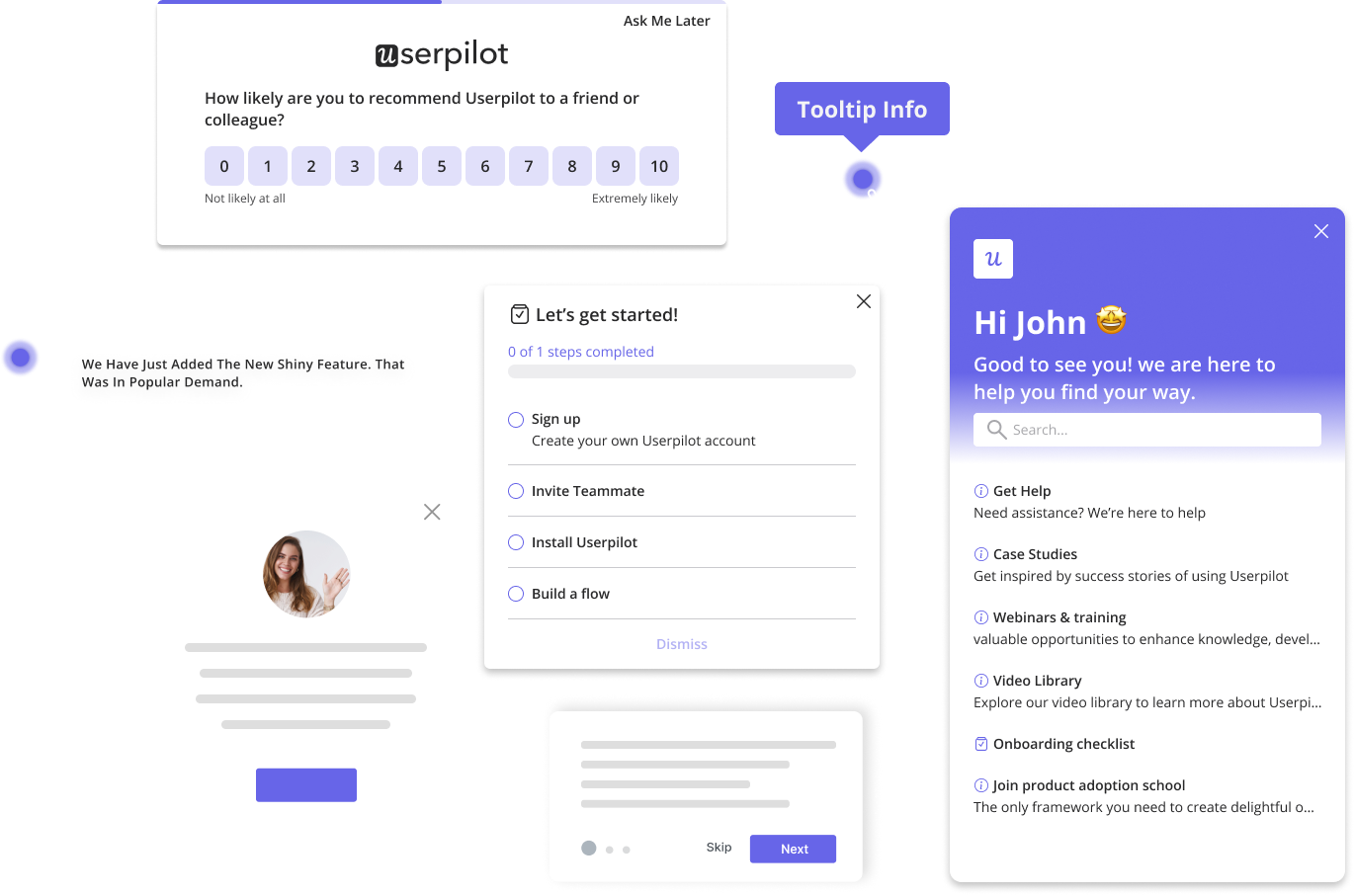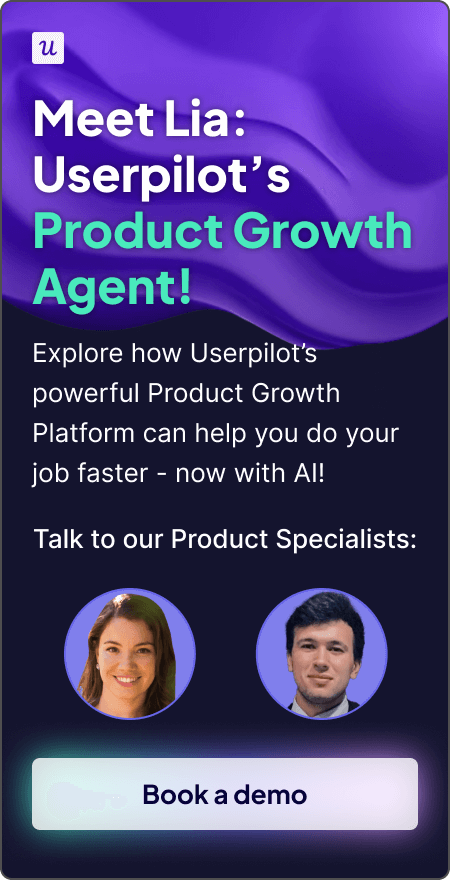
As a UX researcher, I spend my days trying to understand people. What makes them tick? Why do they do what they do within our product? While numbers tell us what is happening, like how many users signed up or clicked a button, they rarely tell us why.
Qualitative data fills in those blanks, providing rich, descriptive information that helps explain the reasons behind user behavior. But without clear examples, qualitative data can feel unstructured and difficult to interpret. And it’s not always obvious what “good” data looks like or how to gather it.
This article will help with that by exploring qualitative data examples, collection methods, and ways to perform qualitative data analytics.
Try Userpilot Now
See Why 1,000+ Teams Choose Userpilot

What qualitative data really is
Qualitative data, also called categorical data, is simply non-numeric data. It describes qualities or characteristics. It’s about the “what it looks like,” “how it feels,” and “why someone chose to act that way.”
For example, when we’re trying to figure out why a user might be struggling with a new feature, a dashboard showing a high feature drop-off rate tells us there’s a problem. That’s a quantitative signal. However, qualitative data is what you gather to uncover what the problem is and why it’s happening.
Things like user interview notes, open-ended survey responses, session replay recordings, or usability testing observations. These sources of qualitative data examples don’t just confirm there’s a problem. They show you what the user experienced and why they abandoned the feature.
What is the difference between qualitative and quantitative data?
Quantitative data focuses on measurable numbers, such as the percentage of users who drop off at a certain step.

In contrast, qualitative data provides insights into the subjective experiences and reasons behind those numbers. For example, feedback from a usability test might reveal that the button label in the menu was unclear, leading to drop-offs.
Qualitative data examples for SaaS product and UX research
Qualitative data, also referred to as categorical data at times, encompasses more than just user interviews. In SaaS and UX research, it can be anything that captures the story, context, or emotion behind a user’s actions. Here are some examples of qualitative data to guide your research and product decisions.
Open-ended survey responses
Open-ended surveys invite users to provide in-depth feedback. Instead of limiting their answers to preset choices like closed-ended questions do, these surveys create space for users to explain challenges or preferences in their own words.
For example, say a recently launched dashboard feature is seeing low usage. You then decide to create an in-app survey with Userpilot, asking “What would make this dashboard more useful for you?”. This might reveal useful ideas for future improvements, such as adding specific metrics, improving load times, or making data easier to filter.

Interview transcripts
These are verbatim written records of conversations you’ve had with users. Transcripts preserve the user’s exact wording and tone, making it easier to spot patterns, pain points, and subtle frustrations during data analysis.
For example, interview transcripts might come in handy when you’re exploring why power users haven’t tried a newly launched feature. Reading the transcript could reveal they didn’t even know it existed because it was buried in a secondary menu.
Case studies
Case studies are in-depth accounts of how a specific customer uses your product over time. They usually explore a single challenge in detail, documenting the context, steps taken, obstacles faced, and measurable results.
Because they’re so thorough, case studies produce large bodies of non-numerical data that can help better shape product strategy.
For example, you might learn so much about your users during the case study interview. It can be how they use your product to achieve a specific goal or any workarounds they come up with. Such insights often help me work on product updates and feature improvements.

Experience descriptions
These are personal narratives where users describe what happened and how they felt during a product interaction. They can also include observations about the product’s characteristics, such as quality, ease of use, and performance.
For instance, a tester might describe feeling “lost” in your statistical analysis dashboard because metrics weren’t labeled in plain language, forcing them to guess what each number meant.
Categorical data
Categorical data, also known as nominal data, is qualitative information that’s grouped into labels or categories instead of numerical values. Using this data makes it easier to spot trends at scale and track how often a theme appears with a particular frequency.
For example, categorizing customer support tickets under labels like “billing issue,” “feature request,” and “bug” to see which category is most common. Even though you can count how many responses fall under each label, the data itself is qualitative. It represents a category, not a measurable amount.
A subtype of categorical data is ordinal data, which arranges these categories into a meaningful order, while remaining qualitative. For example, rating customer satisfaction levels from “very dissatisfied” to “very satisfied.”
Observation notes
Qualitative observations are written records taken by a researcher while watching someone use the product. They often capture visible actions along with any inferred reasoning. Later, these notes are often turned into labeled data so recurring behaviors can be quickly identified and categorized.
Notes may also include contextual factors, such as environment, device type, or distractions that might influence behavior.
For instance, I observe that a user hovered over several icons before choosing one. Based on this, I might suggest in my notes that the icons aren’t intuitive enough.
Videos and recordings
These are screen, audio, or video captures that show how users interact with your product in real time. They let you replay sessions to catch subtle usability issues you might miss in the moment.
For example, a screen recording shows a user repeatedly opening the wrong settings menu when trying to change their password. This points to poor menu labeling or an unclear information hierarchy.
Community posts or product reviews
These qualitative data examples include user-generated feedback shared in public spaces, such as forums, review platforms, or app stores. They’re often candid opinions that can highlight issues or feature requests we might not hear through formal channels.
For example, a community forum might have a thread where multiple users share workarounds for a missing integration. Reviewing these posts could reveal how critical the feature is and how current gaps are impacting adoption.

Qualitative data collection methods
In my role, I work with various forms of qualitative data daily. Each type offers a unique lens into our users’ world, helping us make informed decisions about our product experience.

User interviews and focus groups
There’s no substitute for direct conversation. User interviews and focus groups are goldmines for qualitative data. I get to sit down with users, ask open-ended questions, and let them speak freely about their experiences. This helps us understand their mental models, pain points, and desires in their own words.
For example, when we’re exploring new features, I might ask a user to describe their current workflow and what challenges they face. Their detailed responses give us direct insight into unmet needs, which is invaluable for product ideation and feature prioritization. We also use these sessions to identify customer pain points that quantitative data might only hint at.
But there’s a catch. Good qualitative data analysis requires good data, which requires recruiting the right participants.
I use Userpilot to make this easier. By triggering in-app surveys to targeted segments, I’ve been able to find ideal users for interviews and beta testing much faster.
If you’re curious about how I did it, check out my detailed process at “How UX Researchers 4X Usability Test Response Rates With Userpilot.”

Open-ended survey responses
While surveys often collect numerical data, the open-ended questions provide rich qualitative feedback. After a user finishes an onboarding flow, for instance, we might ask, “What was most confusing about getting started?” or “What could have made this experience smoother?” These are critical product onboarding feedback questions.
We use Userpilot to launch these in-app surveys at critical points in the user journey. Suppose the analysis process shows a new user hasn’t tried a key feature in their first week. So we trigger a survey asking what’s holding them back.
We can also target these surveys by user roles or plan type, like showing a different question to admins vs. end users. This way, we gather qualitative data that is relevant for that specific segment.
The qualitative responses help us understand why users might be giving a low NPS score, for instance. Our platform allows us to create these surveys easily, and then we analyze the text-based feedback to find common themes and improve the experience.

I’ve seen the same approach work for others, too. For example, Unolo used Userpilot’s in-app NPS surveys to collect feedback directly inside their product. They targeted customers with lower scores and responded quickly to any negative feedback, helping reduce churn by 0.5% to 1%.
As Unolo’s product manager puts it, “The NPS feature gave us feedback almost instantly. This helped us get in touch with customers more quickly and understand their concerns with the product, which, in turn, helped us reduce our churn rate.”
If you’re curious about how we handle survey data, you can explore our approach to analyzing open-ended questions.
Observations via session replays
Sometimes, users can’t articulate their struggles, or they might even tell us one thing while their actions show another. That’s where session recordings come in. Watching actual user sessions allows me to observe their natural behavior in our product. I can see where they hesitate, make rage clicks, or get stuck.

As a UX researcher, I use session replay to identify friction points that might not appear in survey responses or quantitative research. Userpilot’s session replay feature lets me jump to specific events in a user’s journey, making it easier to pinpoint exactly where they experienced confusion or frustration. This visual data provides invaluable context for the “why” behind user actions.

Customer feedback and support interactions
Every support ticket, every chat with a customer success manager, every piece of direct feedback is a form of qualitative data. When users reach out for help, they’re often describing a problem in their own words, which reveals the nuances of their experience. We use tools to aggregate this feedback.
Our in-app resource center is a great example; it lets users search for answers and, if they can’t find them, connect with support. These interactions are constantly informing our understanding of what users need. Our customer success team often pulls these insights to help address issues proactively and reduce customer support load.
You can also use Userpilot’s search term analytics to track what users are looking for in your help center. Analyzing these search terms lets you identify missing topics users look for but can’t find, highlighting content gaps for you to improve.

Diary studies and user journals
For longer-term insights into user habits and evolving needs, diary studies or user journals are fantastic qualitative methods. Participants log their experiences over a period, giving us a chronological, personal account. These could be daily reflections on using a new feature or weekly updates on how our product fits into their broader workflow.
I keep it simple, using tools like Google Docs and shared spreadsheets to collect these entries. But you can also use dedicated research platforms such as SurveyMonkey, dScout, or Recollective.
Once you’ve gathered enough entries, look for patterns by grouping similar themes. Or run a thematic analysis to check if user actions and motivations match an existing hypothesis that supports your research objectives. Also, use in-app prompts and push notifications to remind participants to regularly submit updates, helping maintain consistent feedback.
How to conduct qualitative data analysis
Qualitative and quantitative research work best when used together. However, the tricky part is knowing how to combine the two. For example, suppose our New Users Activation Dashboard shows the exact conversion rate from sign-up to a key “Aha!“ Moment. But without qualitative data, we wouldn’t know why some users convert while others drop off.
I use Userpilot’s analytics engine to connect these dots. For instance, if our funnel analysis shows a drop-off at a specific step, I can review session recordings or survey responses from those users to understand their struggles. This helps link specific behaviors with the reasons behind them.
Once I have that context, I start qualitative data coding. This is where statistical and qualitative data methods, like categorizing and frequency counting, help quantify and group together recurring themes.
Userpilot makes this easier by capturing feedback from multiple sources, like NPS surveys or in-app forms, and storing it alongside product usage data. With all the data in one place, I can link recurring themes with user behavior much quickly, and even create statistical models to forecast user churn or adoption.
From insights to action: Making product improvements
For me, qualitative data is about making them make sense. The interviews, surveys, session replays, and observation notes I’ve shared here are the tools I use to spot the real friction points, validate what users need, and decide what to fix first.
When I connect these insights with our quantitative data, I can prioritize changes that move adoption and retention. That’s the difference between “collecting feedback” and building a product people stick with.
If you want to get there faster, book a Userpilot demo and I’ll show you how!






